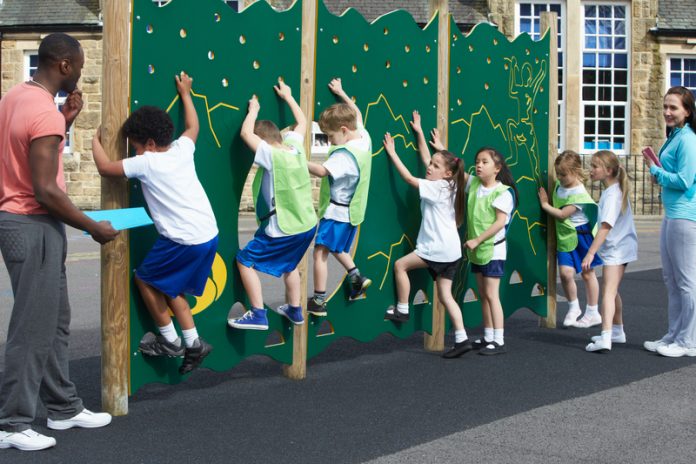Justine Goode, Year 4 teacher and PE lead at Beaudesert Lower School, explores how combining learning with movement can restore children’s mental and physical wellbeing after lockdown
A year of COVID restrictions, social distancing and lockdowns has had an impact not only on children’s learning but also on their physical activity. Without the opportunity to burn off energy in the playground or take part in sports clubs, many children have been spending less time moving and more time in front of their screens.
The cold, dark weeks of the latest lockdown made it even harder for families to get their children moving, and a lot of pupils have returned to school with their activity levels at an all-time low.
This enforced inactivity has affected children’s mental and physical wellbeing at a time when looking after the nation’s health has never been so important. In my view, schools have an important role to play in redressing the balance and providing as many opportunities as possible for children to be active during the school day.
A deeper divide
You don’t need to be an Olympic athlete to agree that exercise is not only good for the body, but it also’s good for the mind, and if children don’t get the opportunity for physical activity, it can affect their ability to learn.
It’s a troubling fact that the slowdown in activity has been more pronounced for pupils from disadvantaged backgrounds who are already battling against a widening attainment gap. A report from Sport England reveals that during the first lockdown, 13% of children from less affluent backgrounds did no exercise compared with 6% from more affluent homes.
Yet again, the pandemic is aggravating existing inequalities and deepening the gulf between disadvantaged children and their peers.
However, there is much that schools can do to make up for the long bouts of inactivity and build movement into the school day while getting children back into the frame of mind for learning.
Rebuilding skills
As most children have missed out on weeks of face-to-face teacher time, there’s an urgency for schools to identify gaps and address them quickly. But this can be done without compromising on physical activity by using active learning.
When pupils returned to school after the first lockdown, I noticed that some of my Year 4 children had lost elements of their understanding of shapes. So we used a lively game where children moved around the classroom connecting up the points of pentagons and hexagons to help reinforce this knowledge.
This also proved to be an effective way to help embed some core skills such as multiplication. Physical activity is a great memory booster, and it makes a task fun, so we encouraged children to learn their times tables by counting up in sixes and sevens while jumping over rulers in the classroom.
Fresh air and fun
Although we have entered a new phase of the pandemic where transmission rates are falling, there is still a strong focus on reducing the risk of infection. Getting children into the great outdoors is the safest way to learn.
To keep children learning outside the classroom we set maths trails around the school playground. The children followed the trails in groups, carrying out calculations together and running off to find cards with the correct answers. The lesson was so enjoyable, the children didn’t even realise they were learning.
It needn’t take time, effort and expensive equipment to get children moving. Some of the simplest games can be the most effective when it comes to teaching children new concepts. A favourite lesson involves hunting for sticks and stones on the school field which the children use to create a clock face and learn to tell the time.
Our active learning lessons are immensely popular with the pupils, and parents are pleased to know their children are getting active while catching up with their learning. Children’s fitness levels have taken a hit during the pandemic, but by combining movement with learning, they will be back on top form in no time.
Beaudesert Lower School uses active lesson plans in English and maths from Teach Active. Teachers can download free active lesson plans from www.teachactive.org












Yes.Its called Lerning by Doing and was a principle of The Scout Association